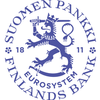Inflation is declining in line with the European Central Bank’s goal, paving the way for an easing of monetary policy
Inflation in the euro area has fallen substantially since its late-2022 peak. In March 2024, its annual rate was 2.4%. Inflation has fallen with the decrease in energy prices and the significant tightening of monetary policy.

“As summer approaches we can start reducing the level of restriction in monetary policy, provided that inflation continues to fall as projected. The biggest risks stem from geopolitics, both the deteriorating situation in Ukraine and the possible escalation of the Middle East conflict, with all their ramifications,” says Governor of the Bank of Finland Olli Rehn.
Growth in the euro area economy has been at a standstill since the end of 2022. This has been attributable to the fall in real incomes stemming from the rise in energy and other prices, and to the decrease in investment and consumption resulting from the higher interest rates and elevated uncertainty. On the other hand, the worst crisis scenarios – especially regarding energy availability – have been avoided. Euro area unemployment is also at its lowest since the introduction of the euro.
Growth is forecast to return to the euro area economy towards the end of this year, largely driven by private consumption, but this could also be delayed. The tensions surrounding the Middle East conflict and Russia’s war in Ukraine could raise energy prices again or bring supply disruptions.
The tightening of monetary policy has contributed over the past year to inflation expectations returning to a level close to the inflation target of 2%. This has led to wage pressures beginning to moderate in the euro area.
At its April 2024 meeting, the Governing Council of the European Central Bank (ECB) took the decision to keep its principal key interest rate unchanged at 4%. The ECB's key interest rates are at a level that is helping considerably to push down inflation. The Governing Council’s future interest rate decisions will ensure that its policy rates stay sufficiently restrictive for as long as necessary. “In June, we will have an updated assessment of the inflation outlook, the dynamics of underlying inflation and the strength of monetary policy transmission. If this were to further increase our confidence that inflation is converging to our target in a sustained manner, we could start to ease the stance of monetary policy and cut interest rates. This assumes there will be no further setbacks, for instance in the geopolitical situation and therefore in energy prices,” says Governor Rehn. The rates on new mortgages have already started to fall slightly, however, as the markets are expecting the ECB to cut policy rates.
The euro area economy needs to improve its productivity performance. Over the medium term, productivity has an impact on both inflation and the level of real interest rates. An important way of boosting productivity is to invest in human capital. A skilled labour force is essential if businesses are to adopt innovations and new technologies. “Improving productivity does not happen overnight. This requires long-term economic policy that supports investment and strengthens companies’ opportunities for growth,” says Governor Rehn.
- Bank of Finland Bulletin publication website (in Finnish)
Keywords
The Bank of Finland is the national monetary authority and central bank of Finland. At the same time, it is also a part of the Eurosystem, which is responsible for monetary policy and other central bank tasks in the euro area and administers use of the world’s second largest currency – the euro.
Subscribe to releases from Suomen Pankki
Subscribe to all the latest releases from Suomen Pankki by registering your e-mail address below. You can unsubscribe at any time.
Latest releases from Suomen Pankki
Marja Nykänen utnämnd till medordförande i Finansiella stabilitetsrådets regionala konsultativa grupp för Europa1.7.2025 17:00:00 EEST | Pressmeddelande
Utnämningen stärker Finlands aktiva roll som främjare av global finansiell stabilitet.
Marja Nykänen nimitetty kansainvälisen rahoitusvakausneuvoston Euroopan alueellisen ryhmän toiseksi puheenjohtajaksi1.7.2025 17:00:00 EEST | Tiedote
Nimitys vahvistaa Suomen aktiivista roolia kansainvälisen rahoitusvakauden edistäjänä.
Marja Nykänen appointed as Co-Chair of Financial Stability Board’s Regional Consultative Group for Europe1.7.2025 17:00:00 EEST | Press release
This appointment reinforces Finland’s active role in fostering international financial stability.
Hushållen har mycket konsumtionskrediter – tillväxttakten har mattats av1.7.2025 10:00:00 EEST | Pressmeddelande
I maj 2025 uppgick det utestående beloppet av konsumtionskrediter som banker med verksamhet i Finland beviljat hushåll till 17,6 miljarder euro och utlåningen minskade med −0,7 % från året innan. Minskningen i det utestående beloppet av konsumtionskrediter är en följd av att utnyttjandet av konto- och kortkrediter och utbetalningarna av konsumtionskrediter utan säkerhet har minskat. Konsumtionskrediter beviljade av banker står för 63 % av hushållens totala utestående konsumtionskrediter. I maj 2025 minskade hushållens utestående kortkrediter[1] (3,6 miljarder euro) med −1,0[2] jämfört med ett år tidigare, då de utestående kortkrediterna vid motsvarande tidpunkt året innan ökade med nästan 6 %. Vid utgången av maj var 19 % av kortkrediterna räntefri betaltidskredit och 81 % äkta kortkrediter, dvs. kortkredit med ränta. I januari–maj 2025 utbetalades från bankerna 9 % mindre sedvanliga konsumtionskrediter utan säkerhet[3] jämfört med motsvarande tidpunkt ett år tidigare. Också det utestå
Kotitalouksilla runsaasti kulutusluottoja –kasvuvauhti hidastunut1.7.2025 10:00:00 EEST | Tiedote
Toukokuussa 2025 Suomessa toimivien pankkien kotitalouksille myöntämien kulutusluottojen kanta oli 17,6 mrd. euroa ja se supistui vuodentakaisesta −0,7 %. Kulutusluottokannan supistumiseen vaikuttavat tili- ja korttiluottojen vähentynyt käyttö ja vähäisemmät vakuudettomien kulutusluottojen nostomäärät. Pankkien myöntämät kulutusluotot kattavat 63 % kotitalouksien kokonaiskulutusluottokannasta. Toukokuussa 2025 kotitalouksien korttiluottokanta[1] (3,6 mrd. euroa) supistui −1,0 %[2] vuodentakaiseen verrattuna, kun vuosi sitten vastaavana aikana korttiluottokanta kasvoi lähes 6 prosentin vauhdilla. Toukokuun lopussa korttiluotoista 19 % oli korotonta maksuaikaluottoa ja 81 % pidennettyjä korttiluottoja eli korollista korttiluottoa. Tavanomaisia vakuudettomia kulutusluottoja[3] nostettiin pankeista tammi-toukokuun 2025 aikana 9 % vähemmän kuin vuosi sitten vastaavana aikana. Myös vakuudettomien kulutusluottojen kanta supistui toukokuussa. Suomessa toimivien pankkien myöntämistä kulutusluot
In our pressroom you can read all our latest releases, find our press contacts, images, documents and other relevant information about us.
Visit our pressroom